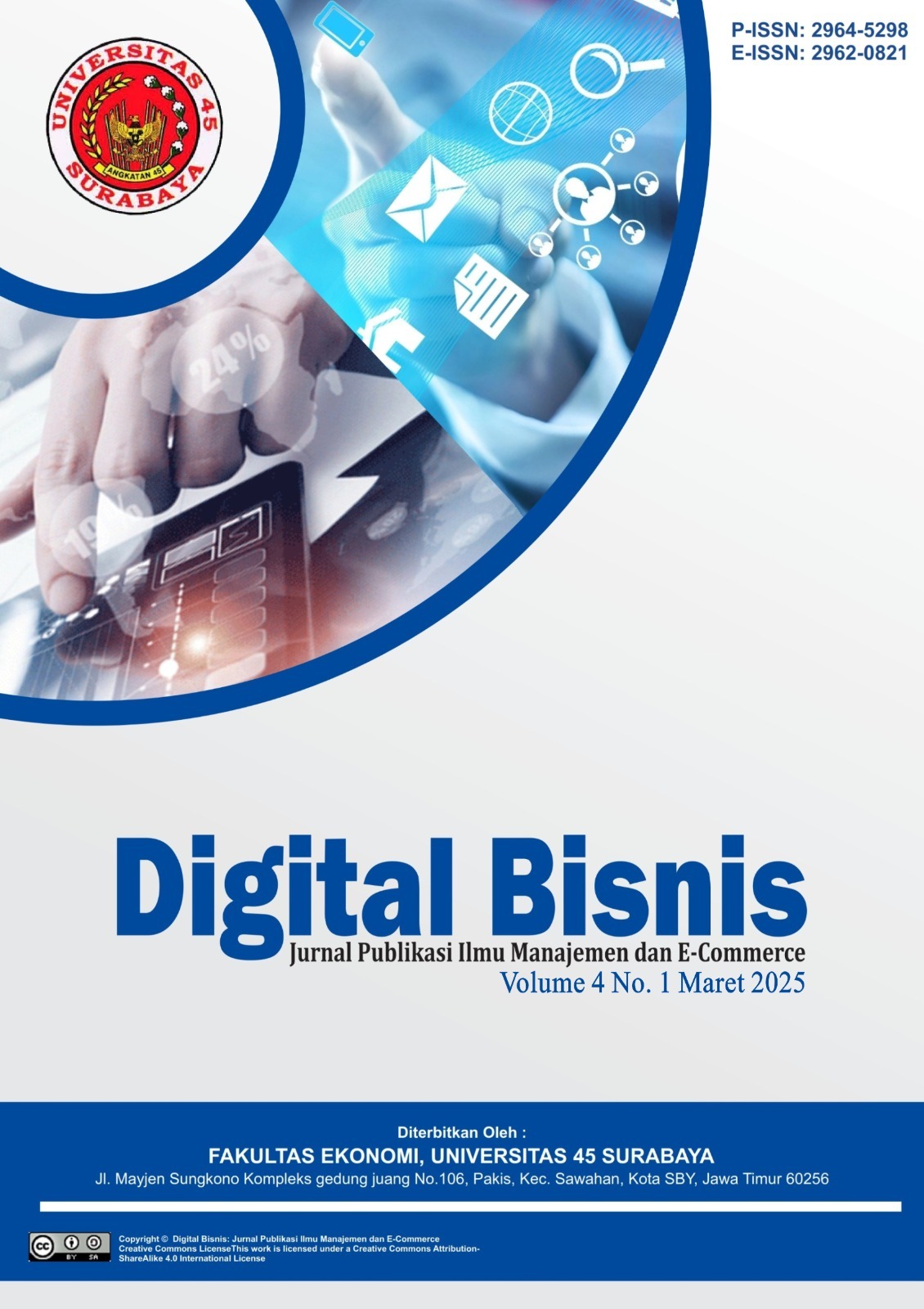Kontribusi Partisipasi Kerja Berbasis Gender dan Kepadatan Penduduk terhadap Petumbuhan Ekonomi di Sulawesi Selatan
DOI:
https://doi.org/10.30640/digital.v4i1.3891Keywords:
Economic Growth, Population Density, Work ParticipationAbstract
Economic growth is a description of the economic activities of a region in a continuous manner towards better economic activities in a certain period, so this discussion aims to analyze the influence of gender-based work pertypi and population density on economic growth in South Sulawesi by using time series and cross section data sourced from the Central Statistics Agency from 2018 to 2022. The method used in this discussion is using a quantitative method with a panel data regression analysis approach. The results of the study show that the gender-based work participation variable has a significant positive effect on economic growth in South Sulawesi and the variable of seat density has a significant negative effect on economic growth in South Sulawesi. Meanwhile, simultaneously gender-based work participation variables and population density have a significant impact on economic growth in South Sulawesi. So this result shows that the government must continue to encourage work participation for both men and women through the provision of jobs.
References
Agus Tri Basuki, I. Y. (2014). Elektronik data prosesing (SPSS 15 dan EVIEWS 7). Danisa Media.
Becker, G. S. (1985). Human capital, effort, and the sexual division of labor. Journal of Labor Economics, 3(1), 533–558. https://doi.org/10.1086/298005
Blau, F. D., & Kahn, L. M. (2017). The gender wage gap: Extent, trends, and explanations. Journal of Economic Literature, 55(3), 789–865. https://doi.org/10.1257/jel.20160995
Bloom, D. E., Canning, D., & Sevilla, J. (2003). The demographic dividend: A new perspective on the economic consequences of population change. Rand Corporation.
Brückner, M., & Schwandt, H. (2013). Growth and population dynamics. Review of Economic Studies, 80(1), 417–450. https://doi.org/10.1093/restud/rdt018
Fadillah, A. (2023). Analisis determinan pertumbuhan ekonomi provinsi Sulawesi Selatan [Unpublished master’s thesis]. Universitas Hasanuddin.
Fitrah, F. (2022). Determinan pertumbuhan ekonomi di provinsi Sulawesi Selatan [Unpublished master’s thesis]. Universitas Hasanuddin.
Ghozali, I. (2016). Aplikasi analisis multivariete dengan program IBM SPSS 23 (edisi 8) (8th ed.). Badan Penerbit Universitas Diponegoro.
Ghozali, I. (2018). Aplikasi analisis multivariate dengan program IBM SPSS 25. Badan Penerbit Universitas Diponegoro.
Goldin, C. (2014). A grand gender convergence: Its last chapter. American Economic Review, 104(4), 1091–1119. https://doi.org/10.1257/aer.104.4.1091
Iskandar, A. (2016). Pertumbuhan inklusif di provinsi Sulawesi Selatan dan faktor-faktor yang memengaruhinya. Jurnal BPPK, 9, 1–25.
Klasen, S., & Lamanna, F. (2009). The impact of gender inequality in education and employment on economic growth: New evidence for a panel of countries. Feminist Economics, 15(3), 91–132. https://doi.org/10.1080/13545700902885645
Lee, R., & Mason, A. (2010). Fertility, human capital, and economic growth over the demographic transition. European Journal of Population, 26(2), 159–182. https://doi.org/10.1007/s10680-010-9225-1
Lusiarista, & Arif, M. (2022). Peran perempuan terhadap pertumbuhan ekonomi di Karesidenan Pati periode 2015-2020. Social Science Studies, 2(3), 197–214. https://doi.org/10.47153/sss23.3792022
Mahrany, Y. (2012). Pengaruh indikator komposit indeks pembangunan manusia terhadap pertumbuhan ekonomi di Sulawesi Selatan [Unpublished bachelor’s thesis]. Universitas Hasanuddin.
Malthus, T. R. (1798). An essay on the principle of population. J. Johnson.
Mirah, M. R., Kindangen, P., & Rorong, I. P. F. (2020). Pengaruh tingkat partisipasi angkatan kerja terhadap pertumbuhan ekonomi dan kemiskinan di provinsi Sulawesi Utara. Pembangunan Ekonomi dan Keuangan Daerah, 21(1), 85–100.
Romer, P. M. (1990). Endogenous technological change. Journal of Political Economy, 98(5), S71–S102. https://doi.org/10.1086/261725
Samsir, A. (2017). Determinan pertumbuhan ekonomi provinsi Sulawesi Selatan. Jurnal Office, 3(1), 51–55.
Smith, A. (1776). The wealth of nations. W. Strahan and T. Cadell.
Solow, R. M. (1956). A contribution to the theory of economic growth. Quarterly Journal of Economics, 70(1), 65–94. https://doi.org/10.2307/1884513
Todaro, M. P., & Smith, S. C. (2020). Economic development (13th ed.). Pearson.
Yunianto, D. (2021). Analisis pertumbuhan dan kepadatan penduduk terhadap pertumbuhan ekonomi. Forum Ekonomi, 23(4), 688–699. https://doi.org/10.30872/jfor.v23i4.10233
Downloads
Published
Issue
Section
License
Copyright (c) 2025 Digital Bisnis: Jurnal Publikasi Ilmu Manajemen dan E-Commerce

This work is licensed under a Creative Commons Attribution-ShareAlike 4.0 International License.








